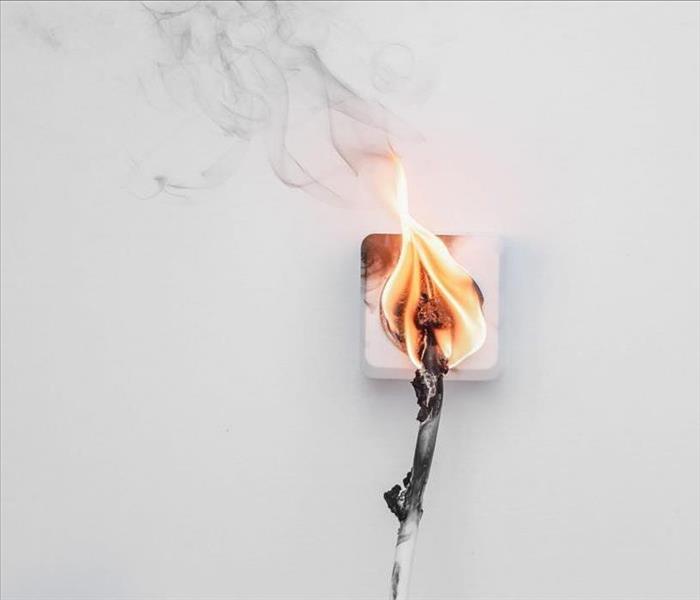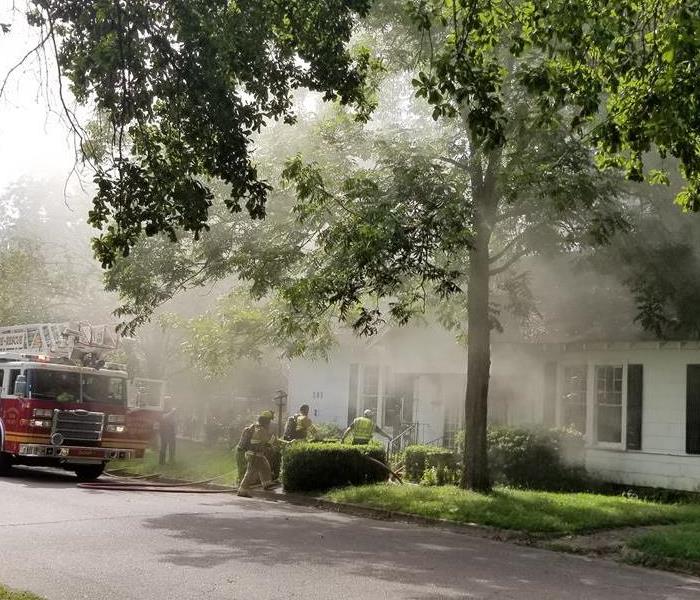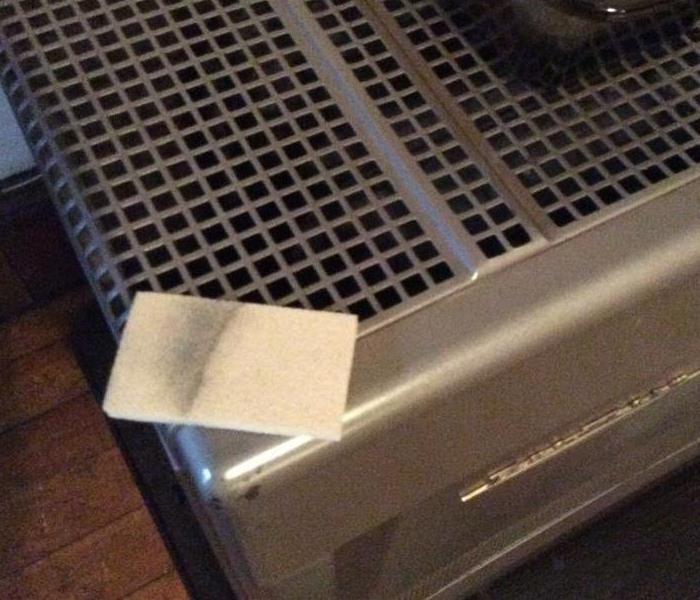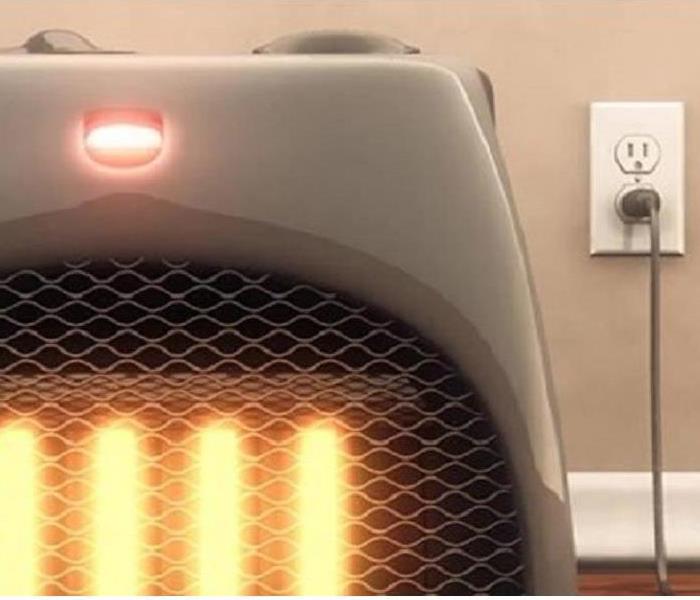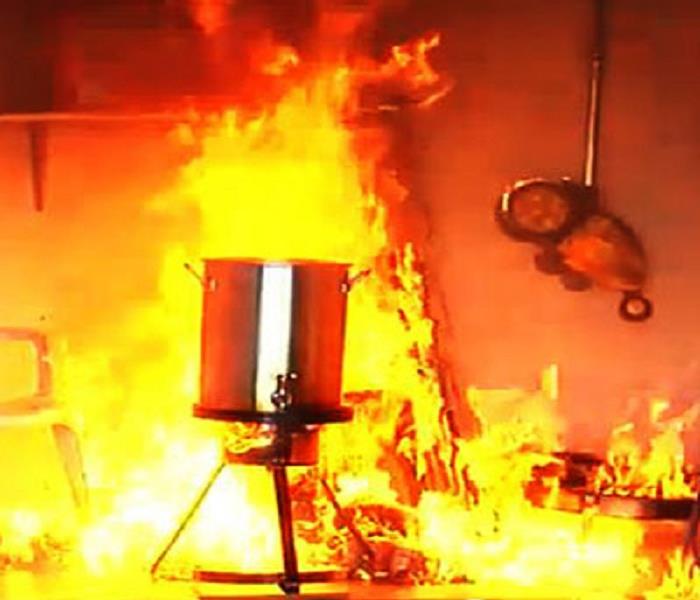Archived Fire Damage Blog Posts
How to Help a Neighbor After a Fire
7/8/2024 (Permalink)
Imagine this. You’re sitting at home relaxing after a long day of work when suddenly you hear the telltale sound that something serious has just happened- firetruck sirens. You get up and look outside to see the engines have stopped in front of your neighbor’s house. What do you do then? Run outside? Go back to what you were doing and ask them or another neighbor about it later? Or do you panic and wonder what you can do to help? Well, here are some quick and easy ways you can help a neighbor after a fire.
- Gather Essentials. If there’s a fire in your home, the last thing on your mind is going to be if you remembered to grab the toothpaste. Raid your stash of minis you took from hotels, and toothbrushes you get every time you go to the dentist and see what you can assemble. Items such as shampoo, conditioner, soap, toothbrushes, toothpaste, deodorant, even extra floss that you have lying around could help someone feel the slightest bit more normal after a fire.
- Bring them some food. A meal, groceries, even some extra nonperishables you have tucked in the cupboard. Anything helps. We know we all can’t be Gordon Ramsay level chefs, so a nice home cooked meal may feel like less of a gift and more of a curse but it’s the thought that counts. If you still aren’t comfortable, there’s always take-out, again, it’s the gesture that’s important.
- Start a fundraiser. It can be anything from going door-to-door asking other neighbors to pitch in supplies, to a GoFundMe to raise money to help offset some of their financial burden. Another great place to get community support, or even ideas on how to help, is through local Facebook groups.
- Check in. Even if you haven’t spoken in ages, a simple “Hey, I’m thinking of you” can go a long way. When you go through a catastrophic, life-changing event, knowing people are there and thinking of you truly makes a world of difference, trust us.
- Respect the Chaos. Odds are good that their phones are blowing up with messages from everyone they know. If you can, let them know they don't have to respond immediately. Acknowledge they have a lot going on and that responding to you does not have to be top priority.
- Offer to listen (and mean it.) No one needs to hear about how your Great-Aunt Helen’s friend’s daughter’s boyfriend’s shed caught on fire 17 years ago, especially if they were just the victim of a fire themselves. Let them talk. Let them cry if they need to. Don’t try to fix everything. Just be there for them. At the end of the day, that’s what counts.
- Give them our number. We know what kind of damage a fire can cause, and our team of trained professionals know what it takes to properly cleanup and restore their home back to normal.
Fire Damage Remediation FAQ's
5/17/2023 (Permalink)
When it comes to fire damage, we get a lot of questions. So, we asked our project managers to answer some of the most commonly asked fire damage remediation queries.
Here is what they said:
Can my clothes/photos/artwork be cleaned after a fire?
Yes. There is a network of different specialty companies that we can coordinate with to quickly remove these items from the source and clean/restore to their original state if no permanent damage has occurred.
Can I use water to clean soot off my walls?
No. A product with degreaser is needed to clean soot, but be warned, there are different types of fire which can require different methods of cleaning. When in doubt, give us a call!
Is it possible to get rid of the odor after a fire?
Yes. Each fire is unique in the scope of work that is required to remove the odor, however. Some are as simple as light cleaning and deodorizing, and others may require demo of heavy areas and encapsulating the framing before new materials to remove the odor.
What should I do after a fire but before SERVPRO comes?
- Take lots of photos from different angles.
- Determine what items you need in case you can't live in the home.
- Order refills of all medications located in a room with visible soot damage. Bottles may not be airtight & it's advised nothing exposed to soot be ingested.
- Call your insurance company.
How does SERVPRO clean fire damage?
We have access to a complete line of SERVPRO cleaning products that are tailored for any situation that we may encounter. The type of fire, material or fabric will determine which product we will need to complete the job.
Still have questions? Need our help getting your home or business back to normal after a fire? Give us a call! We are happy to help!
Time to Toss the Tchotchkes
4/29/2022 (Permalink)
So, maybe it’s a silly title but your local SERVPRO team knows that fire safety is nothing to joke about. However, you might be surprised to learn about some odd fire hazards that pose a real threat, despite almost sounding made up.
Though they look innocent enough, did you know that crystal figurines -- like these guys -- can actually cause a fire in your home. Sure, it’s a rare enough occurrence; however, depending on where these mementos are placed, specifically, within direct sunlight, these items can actually lead to a residential fire.
Even if you did toss any glass or crystal tchotchkes, your home might still be susceptible to the smoke and flames caused by glass doorknobs, jam jars, and even fishbowls.
Avoid the need for professional fire restoration service by ensuring that glass or crystal objects are placed well away from windows, where they won’t encounter direct, sustained sunlight.
In the event that a particular item escaped your notice and things became too hot to handle, your SERVPRO of Haverhill / Newburyport team is standing by to provide expert fire restoration for your home.
Check Your Household for These Hazardous Toys
3/29/2022 (Permalink)
Unfortunately, our SERVPRO team needs to alert you about some popular toys that have become notorious for their potential to cause a fire in your home. In order to avoid the need for our fire restoration service, check your home for the following hazardous toys… (hint: they all have one thing in common and that is electricity).
- Ride-on cars: So fun for kids! And yet, a possible safety hazard. Even major retailers like Fisher Price have had to recall some of their most popular products like the Power Wheels drivable cars due to fires caused by overheated components.
- RC Helicopters/Drones: the problem here comes from the Lithium-Ion Polymer (LiPo) batteries these “toys” require. Although safe in good condition, a damaged LiPo battery is a serious fire hazard.
- Too Hot Hoverboards: similar to the batteries in RC vehicles and drones, hoverboards require an electrical charge. Enough hoverboards have caught fire while charging that they have been banned by major airlines and some college campuses. All the more reason to keep them out of your house.
Whether from a too-hot toy or some other fire hazard, trust your local SERVPRO of Haverhill / Newburyport team for expert fire restoration should you ever need it!
Dangerous Duo: Rare, but Real Fire Hazards
2/25/2022 (Permalink)
The temperatures may plummet but the threat of house fires runs hot all year long. While open flames, fireplaces, and even holiday decorations are well known fire starters, here are a couple of lesser known sources of house fires that SERVPRO suggests is worth being aware of this season, and year-round.
Read on and avoid the need for professional fire restoration service.
Warning: Wiggly Outlets
Electrical outlets that barely hold onto a cord could potentially be a source of fire, thanks to worn down blades inside the outlet. Your best bet is to replace these plugs, rather than risk the high heat that can exist between those blades.
Arson Alert: At-Home Manicures?
If you or someone in your household is big on DIY manicures, make sure they are aware of the dangers of acetone or nail polish remover. Spilled some? Don’t worry -- acetone in liquid form will not suddenly catch fire; however, the fumes are flammable, which is why DIY manis are best done away from flames.
Even the most cautious among us can suffer a fire on their property. In that case, count on SERVPRO of Haverhill / Newburyport to provide professional fire restoration service.
As If You Needed Another Reason to Quit Smoking
2/25/2022 (Permalink)
We’ve all heard about the dangers of smoking when it comes to your health and the health of any members in your household as even second hand smoke can be a real killer.
At SERVPRO, we’re not interested in preaching about personal choices; but, did you also know that smoking has been attributed to an approximate 12% of housefires?
We think that factoid is worth sharing far and wide!
If you’re not convinced to quit smoking for your health reasons, you might reconsider when it comes to the health of your house. Especially in light (get it?) of the fact that, according to HomeAdvisor, the average cost of residential fire and smoke damage can range from $2,867 to upwards of $32,000.
While our fire restoration service will see you safely back in your surroundings in no time, we’re pretty sure you’d rather not have to make that call.
Always prioritize fire safety in your home, but remember that, whatever the cause, SERVPRO of Haverhill / Newburyport is standing by to provide you with our professional fire restoration service, should you need us!
Disastrous Decorating During the Holidays
12/30/2021 (Permalink)
Some may say the disaster comes from putting up your holiday decorations too early or too late. However the real travesty happens when the decorations prove dangerous to your family. No matter your timing, your local SERVPRO team stresses safety this season when it comes to festooning your home with festive decor.
Decorating Guide
Here are a few things to keep in mind when it comes to seasonal decorating and how to do it successfully and safely…
Candles cause many fires on Christmas day for a few reasons: often they are in easy reach of curious children’s hands, left unattended, or kept too close to the Christmas tree. The rule of thumb for candles is to display them higher and on top of an easily monitored stable surface.
Though beautiful and aromatic, Christmas trees can be a hassle during the holiday season. No matter their actual size, a tree in your house often requires that you rearrange your living room each year. Before you start shuffling furniture, keep in mind that it’s not a good idea to position your tree next to a fireplace. Regardless of where you display it, you’ll want to make sure you water your tree daily. A hydrated tree poses less of a fire hazard than a dry one.
Tinsel or other shiny decorations can catch the eye of curious children or pets, transforming quickly into a choking hazard. Make sure you can easily keep an eye on your decorations, especially when kids and pets are present.
Overloading an electric outlet can easily cause a fire. Always be cautious of putting too many plugs into a power strip, lest you wind up with the need for fire restoration in your home!
For more safe decorating tips or any fire restoration requests, contact your local SERVPRO team.
Thanksgiving Day: Family, Friends, and… Fire?
11/23/2021 (Permalink)
You are setting the table, catching up with grandma, perhaps watching the parade, when all of a sudden… you smell something burning. Despite all the cooks in the kitchen, the stove can be overlooked on Thanksgiving, making it a notorious occasion for house fires.
Gobble Day Gone Wrong
Recent data shows an average annual number of house fires totaling 2,300, resulting in $26 million in property damage and fire restoration. In addition, these events came with countless injuries, and unfortunately, a few reported deaths.
Thanksgiving day house fires will typically occur during the hours of 10 am to 5 pm, peak prepping and cooking time, with the majority reported between the hours of 12 pm and 2 pm, perhaps in the hustle and bustle of guests arriving.
Fix your Fire Safety
Stay ahead of fire safety this holiday season! Start now by checking your smoke alarms, planning your fire escape route, and practicing a safe exit strategy with your family. With the facts on your side, you will be ready for anything the season of giving throws your way.
Don't be another statistic; practice fire safety this Thanksgiving and all year round, but know that SERVPRO is standing by with professional fire restoration services you can count on.
Where Do You Go When the Fire Starts?
10/21/2021 (Permalink)
Do you know how long it takes before a fire morphs from something minor to something uncontrollable and destructive? 30 seconds.
That’s why, our team at SERVPRO of Haverhill/Newburyport encourages everyone to imagine a fire starting in your home as something that will happen as opposed to something that could happen. After all, the reality is an estimated 358,500 homes catch fire each year.
In those critical moments, those 30 seconds, do you know what to do? Do your children know what to do?
Develop a Safety Plan for Your Family
Think about it: your kids complete fire drills several times throughout the course of the school year. These drills ensure that your child knows how to safely and quickly exit a building in the event of a fire.
So, why not practice the same safety strategy at home?
Creating a safe fire escape plan requires the following steps:
- Make it clear to your children that this is a drill, just like the kind they have at school.
- Demonstrate what the fire alarm will sound like.
- Discuss the best route to exit the house. (Have at least two different escape plans).
- Pick a meeting spot outside and away from the house. (This space should be in the front of the home so fire personale can see all family members. )
- Execute the plan with the whole family.
Get your kids involved and make this a family activity. Have your kids pick the safe meeting spot outside of the house. Or, when practicing your plan, have your kids pretend they are the parents and responsible for telling YOU what to do. This will help keep them engaged and show that they fully understand how to respond in the event of a fire in your home.
Contact SERVPRO of Haverhill / Newburyport for expert fire restoration service.
Insidious Igniters: The Less Famous Fire Starters in Your Home
9/8/2021 (Permalink)
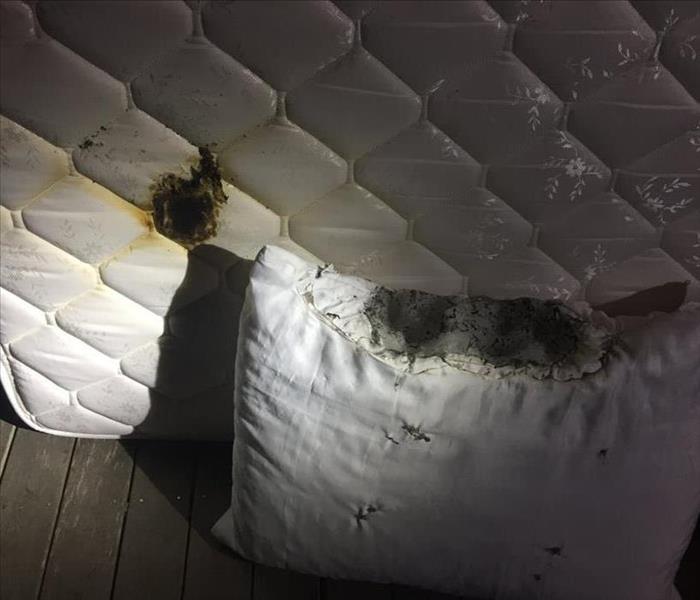 This mattress and pillow caught fire as the result of a laptop left charging while not properly ventilated. Photo from the Falmouth MA Patch.
This mattress and pillow caught fire as the result of a laptop left charging while not properly ventilated. Photo from the Falmouth MA Patch.
When you think about the cause of a house fire requiring fire restoration service, you might imagine an open, unattended flame, like a candle or even a lit cigarette. Items left too long on the stove -- like hotdogs -- can be another common culprit, similar to faulty electrical wiring.
However, there are other lesser known, but equally dangerous, fire threats that you should know about.
Here are three to take seriously:
Dishwashers
- Most of us don’t like to think about life without a dishwasher. While we might associate kitchen fires with cooking left on the stove or oven for too long, the fact is your dishwasher can also cause a fire, if it’s in poor condition. Older dishwashers have the potential to leak water onto the mechanism’s wiring, which could spark a fire. If this happens when you’re not home, you can imagine how quickly something as seemingly insignificant as a small leak can suddenly result in disaster.
Dust bunnies
- Such a cute name for something that is actually rather gross, dust that collects around electronics or power outlets can actually ignite if they encounter a spark. Just another reason to get your kids to clean under their beds!
Laptops and personal devices
- Speaking of kids, with the amount of time so many spend on screens -- especially with remote learning still in full swing across the country -- it’s fair to say that laptops and other electronic devices like iPads and Kindles are working overtime. When that happens, the machines heat up and can cause a fire if left on a bed or couch, especially while still plugged in. Best to leave a laptop on a desk or countertop after use so that it cools properly before possibly encountering any flammable surface.
Even the best fire prevention doesn’t necessarily guarantee total protection from fire. Like any other accident, fire happens. In that case, our team of fire damage recovery experts at SERVPRO Haverhill/Newburyport is standing by to handle any cleaning, remediation or restoration required to return your home to its former glory.
Puffback. What is It and What to Do?
8/23/2021 (Permalink)
When you see the term “puffback”, you might think it was a breed of a pufferfish. If only.
So, what is a puffback? The term refers to a messy, and dangerous, explosion in the burner chamber of your home heating furnace or boiler. When the burner backfires, it sends soot throughout your home.
The soot can be expelled all at once, quickly covering your walls, carpets, and furniture. Or it can leak out soot particles gradually, perhaps causing you to think dirt was tracked into your home somehow.
Most puffbacks occur in oil heating systems, which result in the soot. However, when a puffback occurs in a gas heating system, the explosion in the burner is bigger and dangerous, and could cause a fire and resulting fire damage.
How can you prevent a puffback? The best way is to have your home heating system professionally inspected and cleaned once a year.
What should you do if a puffback happens in your home, spreading soot everywhere? Hire a certified and trained Massachusetts fire damage restoration professional, who will pretest your surfaces to determine the extent of soot damage, and then use the specific equipment and cleaning products required for soot on the surfaces of your home.
Depending on the amount of soot, your fire damage restoration professional may be able to reduce your recovery costs by cleaning lighter soot deposits found on some surfaces, which eliminates your expenses incurred with repainting or refinishing. If the soot level is too deep, they will clean to prepare for painting, which deodorizes the surface and ensures the new paint will adhere properly.
Hear what one of our happy customers had to say after their puffback event:
“When my furnace caused soot to cover my house I was seriously depressed. I called SERVPRO. Brian came out, surveyed the damage and said ‘no problem’. He would deal with the insurance company directly and have a crew out in the next two days. Nury and Gabriel arrived in the morning, and said not to worry, they would take care of everything. Starting in the basement they worked their way to the second floor cleaning everything in sight, from walls and ceilings, to countertops and floors. I went from a state of despair to one of joy. They sure exemplify their motto "Like it never even happened."
If you’re dealing with soot from a puffback, contact our fire damage recovery experts at SERVPRO Haverhill / Newburyport. We’ll come out and assess your soot damage along with any remediation, cleaning, or restoration that needs to be done to your home.
Why a Fast Response Matters for Fire Damage
7/25/2021 (Permalink)
After a house fire has been put out, and everyone is safe, your next priority is to get your house and life back to normal. You might think that you have time to deal with fire damage, and smoke or soot aroma or residue, but the quicker you take action, the less money you’ll spend.
Why? Emergency fire damage mitigation services help you minimize your property damage, and can mean the difference between restoring your home furnishings or items to their preloss condition and having to replace your furnishings or even rebuilding your home.
In fact, the faster that a Massachusetts fire damage restoration expert arrives on-site at your home to perform your fire damage cleanup and restoration, the better the results for you, including lower insurance claim costs.
At SERVPRO of Haverhill / Newburyport, we pride ourselves in our fast response time. When you reach out to notify us of your fire damage, within just one hour, one of our SERVPRO franchise professionals will contact you to arrange for service. Plus, within four hours of that notification, we will be on-site to start fire, smoke, and soot restoration services, which can include:
- Structural cleaning
- Contents cleaning
- Deodorization
See what our happy customers say about their fire damage mitigation experiences with SERVPRO, including this one from Matt W. in Merrimac:
“I had an unfortunate smoke issue in my home. Pat, Ross, and crew came in and cleaned the whole house. They did an awesome job and finished in less time then they told me it was going to take. We were able to get back into the house with minimal interruption.”
Here at SERVPRO of Haverhill / Newburyport, we are professionally trained in fire restoration and can assess your fire damage both safely and effectively with our over 140,000 pieces of cleaning and restoration equipment.
How to Get Rid of a Lingering Smoke Odor Post-Fire
6/15/2021 (Permalink)
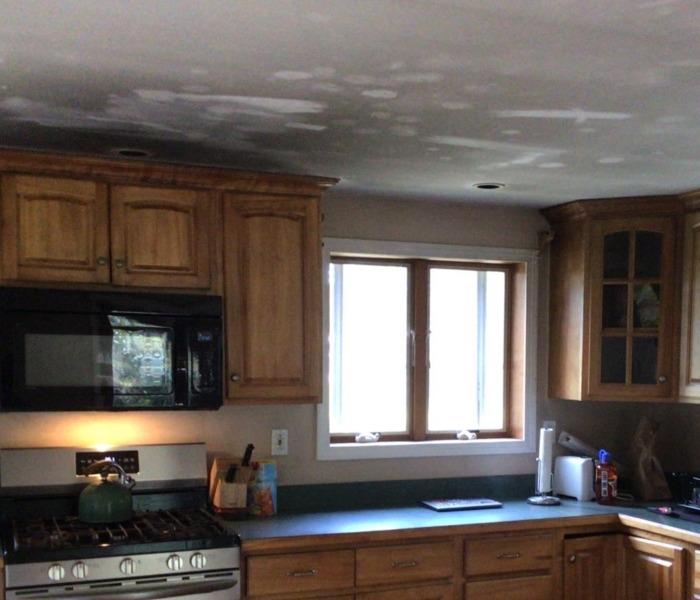 Our team of experts are trained on how to properly clean soot and smoke damage.
Our team of experts are trained on how to properly clean soot and smoke damage.
In the summer, the smell of a fire is perfect when you’re grilling or enjoying a night out by your fire pit. On those occasions, you expect and even cherish the smell of smoke. That’s quite different when you have an unfortunate fire in your home and have to deal with the lingering smoke odor and residue that’s left behind.
Here are tips for home fire smoke odor removal in Massachusetts after the fire trucks have left and you’ve called your insurance company.
First, don’t just mask the smoke odor. Your goal is to remove it, not cover it. These tips probably won’t remove the odor completely, but they’ll help you to deal with it until you’re able to have the smoke odor removed.
- Take a box of baking soda and sprinkle it over the carpets and rugs in your home where the post-fire smoke aroma lingers. Let it sit for a few hours and then vacuum it up.
- Set out bowls of vinegar in these rooms to counteract the smoke odor.
- Open your windows and place fans to help bring the fresh air in and the smokey air out.
- Throw any couch slipcovers, bedding, or any other fabric that can be washed in the washing machine for a thorough cleaning.
Once you’re ready to remove the post-fire smoke odor from your home completely, it’s time to call in the experts. Here at SERVPRO of Haverhill / Newburyport, we follow the Institute of Inspection Cleaning and Restoration Certification (IICRC) standards in the proper removal of odors.
Plus, we have the training and equipment to identify and eliminate post-fire smoke odors. By identifying the cause of the odor, and determining the conditions where it contacts surfaces, the odor can often be removed over time without a trace. Our technicians have access to several odor removal products capable of penetrating surfaces to neutralize an unpleasant odor thoroughly.
If you need help with your home fire damage restoration, take a look at the steps of our fire damage restoration process, which includes removal of soot and smoke from all surfaces. Contact us here at SERVPRO of Haverhill / Newburyport for an assessment of your fire damage in Massachusetts.
Accidentally Cause a Fire? How to Rebuild
5/8/2021 (Permalink)
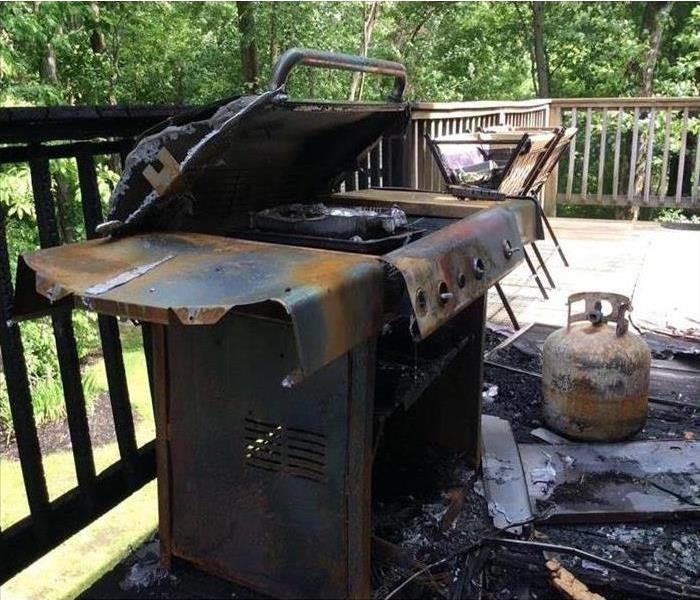 This grill caught fire and nearly burned the entire house down.
This grill caught fire and nearly burned the entire house down.
Warmer weather is when our thoughts turn to spending more time outside, be it going for a walk, grilling, gardening, or painting. These are all enjoyable activities, but you need to be careful with at least two of them.
When you’re painting your deck or fence to spruce up chipped paint after winter storms, clean up any oil-based paint that doesn’t make its way onto the fence and don’t leave a rag covered in oily paint out on your deck for hours in the sun. Even though it doesn’t sound possible, oil-based paint on rags can spontaneously combust in the sun, causing a fire to your deck and/or home.
Another note of caution: Your grill should always be placed away from your house, and certainly not right next to the side of your house. The last thing you want is a grease fire or explosion to occur on your grill, which then quickly engulfs your home.
If either of these fire damage incidents have occurred, you probably know that SERVPRO can help you with smoke and soot cleanup. But did you know that we also have a full construction division, run by Construction Manager Noel Torrissi, that can help you rebuild after you’ve gone through the checklist of after the fire tasks.
Our professional team at SERVPRO of Haverhill / Newburyport can simplify your fire damage restoration process by helping you with the remediation and rebuilding. Using one expert company for all of your fire damage rebuilding needs alleviates your stress of having to find a contractor on top of everything else, saves you time, and keeps your costs low.
Contact us here at SERVPRO of Haverhill / Newburyport for an assessment of your fire damage in Massachusetts along with a plan for remediation and rebuilding to bring your home back to its pre-fire state.
Faulty Wiring: What to Look For
4/12/2021 (Permalink)
We’ve all heard the horror stories of a house catching fire due to faulty wiring. They can make even the least electronically-inclined person want to become an electrician and rewire their whole house. Please don’t do that, though, as home wiring should be left to the pros.
Before you go and hire an electrician to rewire your house, or even check the wiring, here are some tips and indicators of potential faulty wiring in your home. If you see or smell any of these, you should have a trusted electrician take a look before a house fire occurs with post-fire damage:
- A burning smell, electronic burning odor, or odd odor near your outlets. This is one of the primary warning signals of faulty wiring. If you smell a pungent burning aroma, turn off the power immediately and call an electrician. The electricity may have arced inside the panel, causing a scorched electrical outlet.
- Flickering or dimming lights. Yes, according to pop culture, that’s a sure sign of a ghost inhabiting your house. But in reality, that can be an indicator of faulty wiring and an overloaded electrical circuit.
- Chewed wiring. If you have a new puppy that’s in chewing mode, or have had mice or squirrels in your walls or attics, you might have frayed or chewed wires that are easily viewable (if it’s a puppy gnawing on the lamp’s electrical cord) or unseen if mice are crawling around and chewing on things in your walls. Either are an indicator that you should have a trusted electrician check out your wiring around the areas.
- An outlet that’s hot to the touch. Your electrical outlet and light switch should never be hot when you touch it.
If you had a fire in your home from faulty wiring and you need help with your home fire damage restoration, take a look at the steps of our fire damage restoration process. Contact us here at SERVPRO of Haverhill / Newburyport for an assessment of your fire damage in Massachusetts caused by faulty wiring along with a plan for remediation and clean up.
Could Your Dryer Cause a Fire?
2/11/2021 (Permalink)
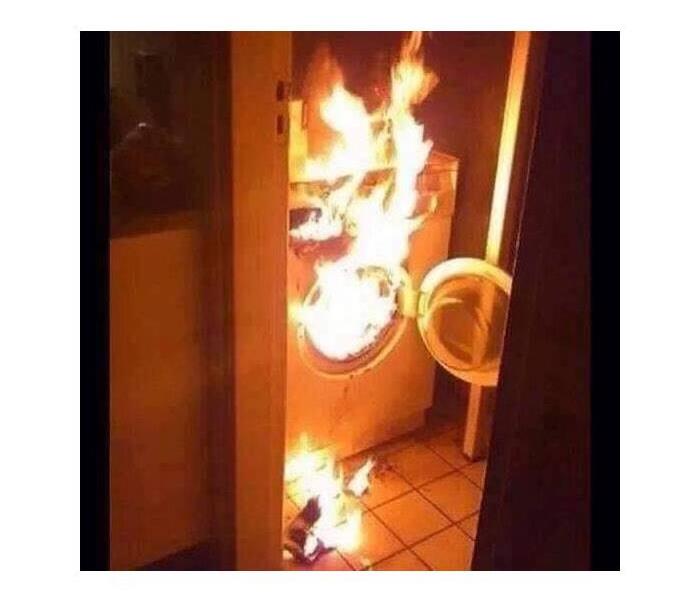 This photo of a clothes dryer on fire went viral after a Facebook user posted it in 2018.
This photo of a clothes dryer on fire went viral after a Facebook user posted it in 2018.
Did you know that your dryer could cause a fire? There’s a few reasons why that could happen, but the most common is lint that builds up in the lint trap and dryer vent. If that lint trap or vent isn’t cleaned often, the lint blocks the airflow and dries up, which can quickly result in a fire.
You might be thinking that this is rare.
It’s not. According to the National Fire Protection Association, washers and dryers cause 15,970 fires each year, with dryers being 92% of that amount.
What can you do to prevent your dryer from causing a fire in your house?
First, remove the dryer lint from the lint trap each and every time you use the dryer. This will work to prevent the lint from building up and overflowing into the vent itself.
As for that vent, that also needs to be cleaned out and investigated every few months. If you don’t have a covering over the vent flap outside of your house, you should look into one. They’re available on Amazon and easy to install. The ones that have a removable plastic webbed covering over them help in keeping birds from creating a nest in your vent when the flap opens, which could easily cause a fire with the accumulation of twigs and leaves.
Also, make sure that you have plugged your dryer into the proper voltage, or that the person who installed it did, to eliminate the risk of faulty wiring causing fire damage.
If your dryer has caused smoke and soot from fire damage, contact us here at SERVPRO of Haverhill / Newburyport for help with your fire damage restoration.
Beware of your Dryer!
9/18/2020 (Permalink)
If someone was to ask you what causes a house fire, what would you say? Odds are you would think it would have something to do with a kitchen appliance, a candle, or maybe even lightning, right? Well there’s another danger that is often forgotten about and can have just as catastrophic results. Clothes dryers, if not properly maintained, can pose a serious risk to your home. Here is a brief checklist that you can follow to lessen the risk of a dryer-related disaster in your home.
Always remember:
- Clean the lint tray between every load.
- Do not run the dryer if you are not home.
- Clean the dryer vent duct work yearly.
- Check behind the dryer for dust (and be sure to clean it!)
The Anatomy of Smoke & Fire
9/4/2020 (Permalink)
Smoke and soot are incredibly invasive. They can and will invade all kinds of nooks and crannies within your home, potentially resulting in hidden damage and odor. Our smoke damage expertise and experience allows us to inspect and accurately assess the extent of the damage and help you develop a comprehensive plan of action.
Smoke and soot facts:
- Hot smoke migrates to cooler areas and upper levels of a structure.
- Smoke flows around plumbing systems, seeping through the holes used by pipes to go from floor to floor.
- The type of smoke may greatly affect the restoration process.
Different Types of Smoke
Closely Related but Very Different
There are two different types of smoke– wet and dry. Different types of smoke mean different types of soot residue after a fire. Before restoration can begin, our team will test the soot to determine which type of smoke damage has occurred. The information collected during these pretests determine what cleaning procedures we will follow. Here is some additional information:
Wet Smoke – Plastic and Rubber
- Low heat, smoldering, pungent odor, sticky, smeary. Smoke webs are more difficult to clean.
Dry Smoke – Paper and Wood
- Fast burning, high temperatures, heat rises therefore smoke rises.
Protein Fire Residue – Produced by evaporation of material rather than from a fire
- Virtually invisible, discolors paints and varnishes, extreme pungent odor.
Getting Back to Normal
Our Fire Damage Restoration Services
SERVPRO of Haverhill/Newburyport specializes in fire and water damage restoration, which means we have specific training, personnel, and equipment to get your home back to normal quickly. As a locally owned and operated business, SERVPRO of Haverhill/Newburyport is close by and ready to help you out of your emergency.
Make a Plan
9/2/2020 (Permalink)
It’s September which means it is once again National Preparedness Month. This week’s theme is Make a Plan. In the spirit of planning ahead, we have a few steps you can take to prepare in case you ever find yourself in a fire.
- Make an exit plan: In the event of a fire, knowing your exit strategy ahead of time is vital. Different rooms in your home or office may require a different plan, so be sure to inform everyone of each different exit strategy.
- Have a defined meeting place: Establishing a meeting place ahead of time eases anxieties of where to go and allows you to more easily account for everyone who was inside and make sure no one is missing.
- Keep valuables somewhere safe: By keeping important files and other valuables in a central, safe location, they can be more easily gathered in a short amount of time. Another option to consider is a fire-proof lock box or safe to store valuables.
After a House Fire
9/2/2020 (Permalink)
Often, the hardest part for residents after a home fire is knowing where to begin and who to contact. These tips taken from FEMA provide information on what to do after experiencing a tragic home fire.
Your Next Steps After a Fire
Here are the steps to follow after a fire in your home:
- Contact your local disaster relief service, such as the American Red Cross. This will help you find a place to stay and to find food, clothing and medicine.
- If you have insurance, contact your insurance company. Ask what you should do to keep your home safe until it is repaired. Ask who you should talk to about cleaning up your home. If you are not insured, try contacting community groups for aid and assistance.
- Check with the fire department before entering your home to ensure it is safe. Be very careful when you go inside, floors and walls may not be as safe as they look.
- The fire department will tell you if your utilities (water, electricity, and gas) are safe to use. If they are deemed to be unsafe, firefighters will have them shut off before they leave. Do not try to turn them back on by yourself as this could be very dangerous.
- Contact your landlord or mortgage company to inform them of the fire.
- If you leave your home, call the local police department to let them know that the site will be vacant.
- Begin saving receipts for any purchases made in relation to the loss. These receipts may be needed later by the insurance company and are needed to prove any losses claimed on your income tax.
- Check with an accountant or the IRS regarding special benefits for people recovering from a fire loss.
Stay Safe While Grilling
8/11/2020 (Permalink)
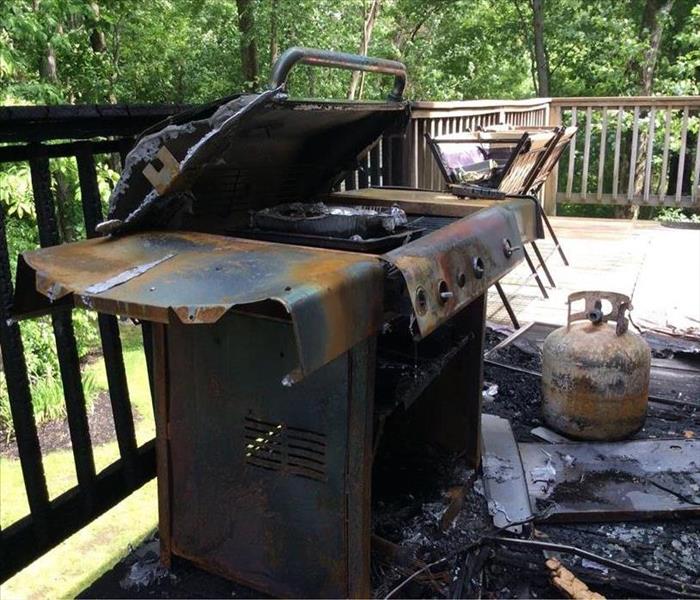 This grill caught fire and left half of a house and the deck it was placed on utterly destroyed.
This grill caught fire and left half of a house and the deck it was placed on utterly destroyed.
Grilling season is back in full swing and so are grill-related disasters. No matter your level of experience, it is important to remember that no one is immune from grill fires. There are, however, some steps you can take to help minimize your chances of ending up in a bad situation.
- Keep your grill away from the house- This means keeping it off of the deck as well. The general rule is to keep the grill at least 10 feet from a standing structure.
- Be careful of grass- Grass, especially if it’s dead, can pose a significant fire hazard. If ashes fly out of a grill and land on the grass, the grass could catch and cause serious damage.
- Pay attention- Don’t leave your grill unattended for extended periods of time. Fires can start in the blink of an eye, so be sure to supervise anytime your grill is on.
Remember to use common sense when using a grill and if you are unsure of something, look it up. Stay safe and enjoy the rest of the summer!
Space Heater Safety Tips
2/13/2020 (Permalink)
During the cold New England winters, many homeowners use space heaters to help heat their homes. But space heaters can also cause deadly fires if left unattended or used improperly. To help keep your family safe, follow the mass.gov safety tips listed below.
Using space heaters safely
- Keep space heaters 3 feet away from drapes, furniture or other things that can burn.
- Put heaters on a level surface away from places where someone might bump into it and knock it over.
- Avoid using extension cords. If you must use an extension cord, use a heavy duty one marked with a power rating at least as high as that of the heater itself.
- Never leave a space heater unattended.
- Never leave a space heater on while you sleep.
- Supervise children and pets near space heaters.
- Buy heaters that are tested and labeled by a nationally recognized testing company, such as Underwriter’s Laboratories Inc.(UL).
- Keep electric heaters away from water. Never use them near a sink or in the bathroom.
- Never use an unvented kerosene heater. It is illegal to sell or use them in Massachusetts.
Every Second Counts
1/27/2020 (Permalink)
Most people think of escape plans and prevention when they think about fire safety but there is a much neglected and overlooked resource to consider.
The Forgotten Red-Head!
Prevention and a plan are obviously high priority, but when is the last time you thought about that fire hydrant up the street from your home or business? Keeping it clear of snow can save valuable time when time is of the essence.
If you have thought of it, but your thoughts go something like "It's not my responsibility to clear it of snow" you should reconsider.
Saving Valuable Seconds
Depending on the city or town you live in, keeping the hydrant clear of snow and debris could quite possibly be your responsibility. Check with your local fire department or town hall to find out the laws in your area.
Beyond that, keeping it clear only benefits you. If you are the victim of a fire, what do you want the firemen spending their time on? Clearing the hydrant or fighting the fire? Be smart. Be a good neighbor. Do what's Right.
After A Fire
If you are the unfortunate victim of a fire, we're here to help. After the fire trucks leave, your home likely suffers from fire and smoke damage and extensive water damage from firefighting efforts. SERVPRO of Haverhill/Newburyport has the specialized fire restoration training needed to restore your home to pre-fire conditions.
Have Questions About Fire, Smoke, or Soot Damage? Call Today – (978) 374-8555
Cooking Safety Tips
1/17/2020 (Permalink)
Cooking Fire Preparedness
Cooking fires are the number one cause of home fires and home fire injuries. Home fires are more likely to start in the kitchen than any other room in your house. Here are some facts and tips from mass.gov to help prevent kitchen fires.
Cooking fires are the #1 cause of home fires and home fire injuries according to MFIRS statistics.
Cooking Safety Tips
- Put a lid on a grease fire to smother it, then turn off the heat. Baking soda will also work.
- Never move a burning pan. You can be badly burned or spread the fire.
- Never throw water or use a fire extinguisher on a grease fire. Water will only spread the fire and the force of the extinguisher can splash flaming grease out of the pan.
- Stand by your pan. Don’t leave food, grease or oils cooking on the stovetop unattended.
- Wear short or tight fitting sleeves when cooking. Loose fitting clothing can easily catch fire.
- If your clothing catches fire, STOP, DROP & ROLL to put out the flames. Put burns in cool running water. Call 9-1-1 for help.
- Keep pot handles turned inward to prevent accidental spills of hot contents.
- Keep combustible objects such as pot holders, towels, paper or plastic bags away from heating elements.
- For fires inside an oven or microwave, keep the door closed, turn off the appliance, and call the fire department.
- Don’t place any metal inside a microwave. Utensils, aluminum foil or twist-tie wraps can arc and cause a fire.
- Microwaved foods and liquids can become very hot. Use caution to avoid scalds.
- Unplug appliances, such as toasters and coffee makers, when not in use.
- Don’t use the oven to store items.
Following these tips will help you to prevent kitchen fires. However, should your home experience an unexpected disaster, contact us at SERVPRO of Haverhill/Newburyport at 978-374-8555. We’re here to help restore your property, "Like it never even happened."
Smoke and Fire Facts
9/30/2019 (Permalink)
Smoke and soot are invasive and can penetrate various cavities within your home, causing hidden damage and odor. Our smoke damage expertise and experience allows us to inspect and accurately assess the extent of the damage to develop a comprehensive plan of action.
Smoke and soot facts:
- Hot smoke migrates to cooler areas and upper levels of a structure.
- Smoke flows around plumbing systems, seeping through the holes used by pipes to go from floor to floor.
- The type of smoke may greatly affect the restoration process.
Different Types of Smoke
Closely Related But Very Different
There are two different types of smoke–wet and dry. As a result, there are different types of soot residue after a fire. Before restoration begins, we will test the soot to determine which type of smoke damage occurred. The cleaning procedures will then be based on the information identified during pretesting. Here is some additional information:
Wet Smoke – Plastic and Rubber
- Low heat, smoldering, pungent odor, sticky, smeary. Smoke webs are more difficult to clean.
Dry Smoke – Paper and Wood
- Fast burning, high temperatures, heat rises therefore smoke rises.
Protein Fire Residue – Produced by evaporation of material rather than from a fire
- Virtually invisible, discolors paints and varnishes, extreme pungent odor.
Getting Back to Normal
Our Fire Damage Restoration Services
SERVPRO of Haverhill/Newburyport specializes in fire and water damage restoration. We have the specific damage restoration training, personnel, and equipment and can quickly restore your home to pre-fire condition. Moreover, We live and work in this community too; we might even be neighbors. As a locally owned and operated business, SERVPRO of Haverhill/Newburyport is close by and ready to respond to your smoke or fire damage emergency.
Clothes Dryer Fire Safety Outreach Material
9/3/2019 (Permalink)
Growing up comes with responsibility, doing your own laundry is one of them. Did your parents ever tell you to clean the lint filter before every use? Well if they did, here is why. 2,900 home clothes dryer fires are reported each year and in some cases are fatal. Failure to clean the dryer is the leading cause of dryer fires and they mostly occur in the fall and winter months. Here are some do’s and don’ts when it comes to clothes dryers.
Do’s
- Have your clothes dryer installed by a professional.
- Clean the lint out of the vent pipe every three months.
- Put a cover on the outside wall dampers to keep out snow, dirt, and rain.
- Make sure the outdoor vent covering opens when the dryer is on.
- Keep the area around the dryer free of items that can burn.
Don’ts
- Do not use a clothes dryer without a lint filter.
- Do not put too many clothes in the dryer at once.
- Do not dry anything containing foam, rubber or plastic.
- Do not dry items that have come into contact with anything flammable.
- Do not leave a clothes dryer running if you leave the house.
5 Most Common Causes Of A House Fire
8/13/2019 (Permalink)
To the hot summer days, to the cold frigged winters, house fires can be started quickly and spread fast. A house can easily catch fire from the misuse of heating equipment, appliances and even smoking in your bedroom. In fact, house fires are the leading cause of all fire deaths in the United States.
Here are 5 of the most common causes of a house fire and some prevention tips.
- Cooking equipment. Pots, pans and burning food can easily overheat and catch fire if the person is not paying attention. Stay in the room, or ask someone to watch your food while you are away from the kitchen.
- Heating. Portable heaters are used a lot during the winter months. Keep portable heaters at least 1 meter away from furniture, laundry, curtains, clothes and anything else that may be a hazard. If you have a furnace, make sure it is inspected once a year.
- Smoking in bedrooms. Fires started in the bedroom makeup 73% of all house fire fatalities! Bedrooms should be kept off-limits from smoking. Cigarette flames may stay alit for several hours before dying out. It could easily catch fire if it came in contact with flammable materials.
- Electrical Equipment. Electrical appliances like toasters, microwaves, and skillets should always be double-checked before using. Overloaded adapter plugs can also cause a fire from overuse of electricity. Don’t plug too much in at once.
- Candles. Who doesn’t love a good smelling candle? If left unattended it could cause your hose to go up in flames! Keep them away from items like tissue boxes, books, and napkins. And of course, always blow them out before leaving a room.
Fireplace Safety Tips
3/2/2019 (Permalink)
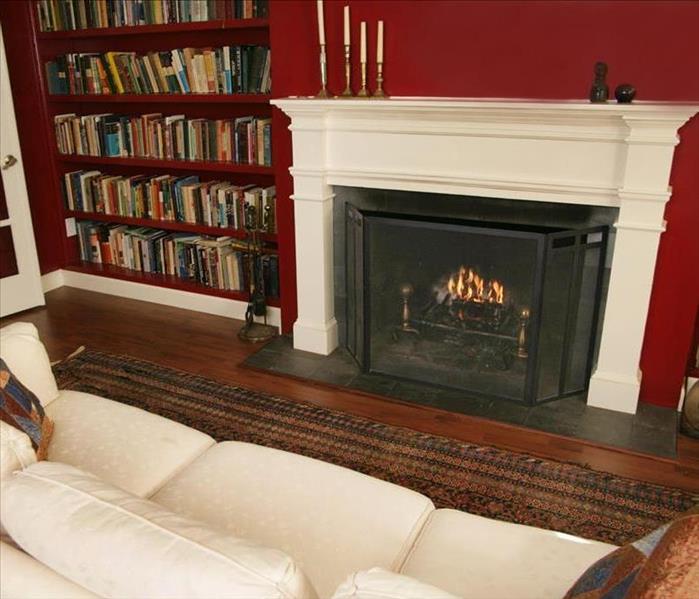 Fireplaces are beautiful and cozy focal points in any home. Check out our safety tips to enjoy your fireplace safely.
Fireplaces are beautiful and cozy focal points in any home. Check out our safety tips to enjoy your fireplace safely.
During the chilly winter months in New England, many Amesbury residents keep warm in front of a cozy fire. Whether you have a gas, wood, or electric fireplace, it’s important to follow a few safety guidelines to ensure that you are keeping your family safe from potential fire hazards.
Wood and Gas Fireplaces
Get an annual fireplace and chimney inspection from a trusted professional to make sure your fireplace and chimney are in good working condition. Be sure that the chimney flue is open before the fire is lit. An open flue will allow the air to feed the flames and allow the smoke to exit. And like any other source of fire, keep your children and pets away from the flames.
Electric Fireplaces
Many homes have an electric fireplace and although the flame isn’t real, safety precautions still need to be taken. Your electric fireplace is essentially a portable electric heater, and should be treated as such. Be sure that your heat source has enough space around it for the air to flow, and that it isn’t close to curtains or other materials that could potentially burn. Keep your electric fireplace away from any water sources, it should never be used near a washing machine, sink, or other source of water. Lastly, power strips and extension cords are not recommended; plug your fireplace directly in a wall unit.
Space Heater Safety Tips
2/18/2019 (Permalink)
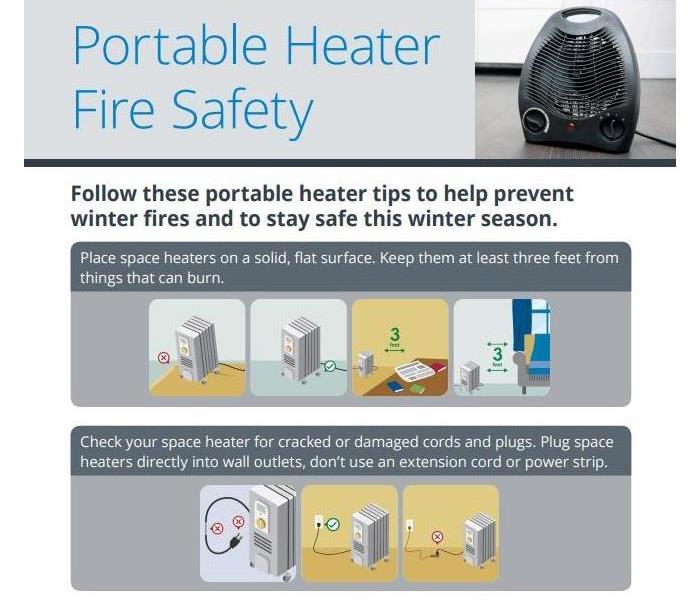 Space heaters should always be used with caution. Check out these safety tips to avoid potential fires cause from space heaters.
Space heaters should always be used with caution. Check out these safety tips to avoid potential fires cause from space heaters.
During the cold New England winters, many homeowners use space heaters to help heat their homes. But space heaters can also cause deadly fires if left unattended or used improperly. To help keep your family safe, follow the mass.gov safety tips listed below.
Using space heaters safely
- Keep space heaters 3 feet away from drapes, furniture or other things that can burn.
- Put heaters on a level surface away from places where someone might bump into it and knock it over.
- Avoid using extension cords. If you must use an extension cord, use a heavy duty one marked with a power rating at least as high as that of the heater itself.
- Never leave a space heater unattended.
- Never leave a space heater on while you sleep.
- Supervise children and pets near space heaters.
- Buy heaters that are tested and labeled by a nationally recognized testing company, such as Underwriter’s Laboratories Inc.(UL).
- Keep electric heaters away from water. Never use them near a sink or in the bathroom.
- Never use an unvented kerosene heater. It is illegal to sell or use them in Massachusetts.
Church Fire Causes Smoke Damage
2/4/2019 (Permalink)
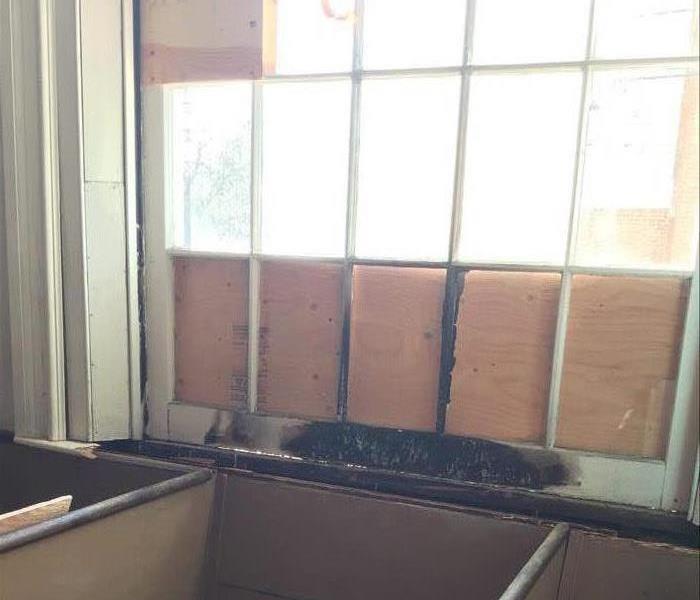 Fire and smoke damage caused by a candle that reignited in the windowsill.
Fire and smoke damage caused by a candle that reignited in the windowsill.
Recently, a local church experienced fire damage and called in SERVPRO of Haverhill/Newburyport to help. The fire started from a candle burning in the windowsill which spread to a cavity in between the walls. Luckily, a neighbor saw the fire inside of the church and promptly called the fire department. The first responders were quick to arrive, extinguishing the fire and preventing it from spreading throughout the building. Despite their timely response, unfortunately, there was quite a lot of damage to the window and carpet below. Smoke filled the church, resulting in black soot covering the surfaces throughout, including the pews, walls, ceiling, and balcony area.
We began the process by wiping the top layer of contaminants away. Then, using SERVPRO’s time-tested and industry-approved steps, along with our proprietary cleaning products and methods, we restored the walls and surfaces without the need to repaint or refinish. The cleaning process removed the smell from the fire, returning it to pre-fire condition. We have the training and equipment to identify and eliminate these offensive odors. By identifying the cause of the odor and determining the conditions in which the damage was done, the odor can often be removed over time without a trace. Our technicians have access to several odor removal products capable of penetrating surfaces to neutralize an unpleasant odor thoroughly.
Fire Prevention at the Fire House!
10/31/2018 (Permalink)
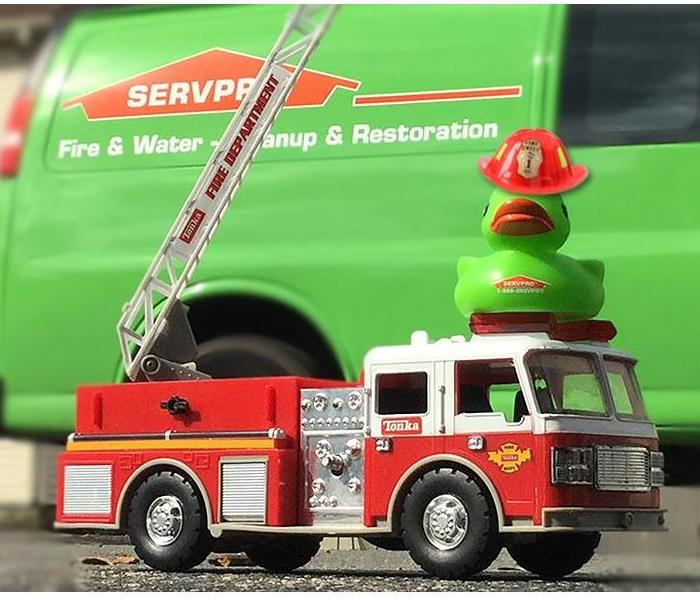 Our SERVPRO duck, Figuero came with us to the Fire Department's Open House! Isn't he cute on his little truck?
Our SERVPRO duck, Figuero came with us to the Fire Department's Open House! Isn't he cute on his little truck?
Fire Prevention Month
October is Fire Prevention Month and every year, local fire departments host an open house to educate the community about fire safety. It’s a great family event to meet the firefighters and see them demonstrate the best safety practices. The smoke house demonstration was a favorite of the children, where they got to walk through a fire and smoke simulation, learning to crawl under the smoke to safety. The firefighters also had a jaws of life demonstration that was really amazing to watch!
SERVPRO of Haverhill/Newburyport is always happy to be part of this great event and support our local fire departments. We appreciate the brave men and women that serve our community and help keep us safe. Papa Gino’s generously donated pizza for this event, and we donated lollipops, water, and apples from Connor’s Farm. We also gave out cute little SERVPRO rubber ducks to the children (and some adults too!)
SERVPRO of Haverhill/Newburyport specializes in fire and water damage restoration. We have the specific damage restoration training, personnel, and equipment and can quickly restore your home to pre-fire condition.
What To Do After a Home Fire
9/17/2018 (Permalink)
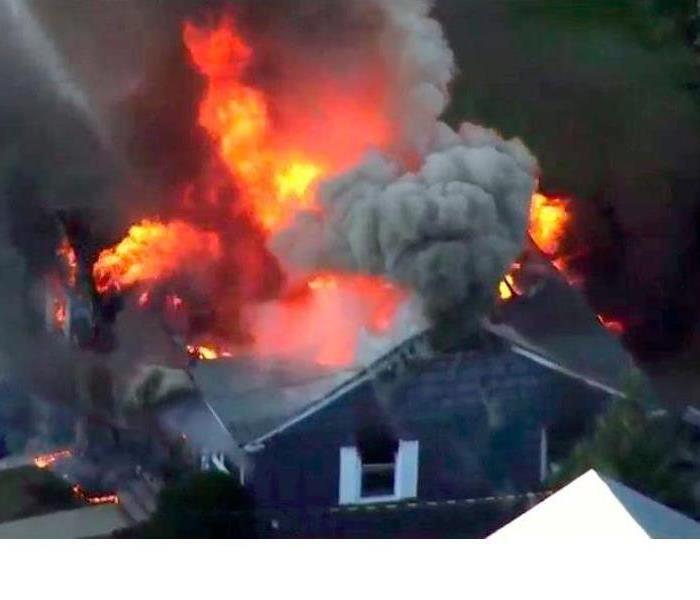 Photo of one of the many homes damaged from last week's gas related fires and explosions.
Photo of one of the many homes damaged from last week's gas related fires and explosions.
Our hearts go out to the victims of the Merrimack Valley gas fires that struck the towns of Lawrence, Andover and North Andover last Thursday. Often, the hardest part for residents after a home fire is knowing where to begin and who to contact. These tips taken from FEMA provide information on what to do after experiencing a tragic home fire.
Checklist for Next Steps After a Fire
Here are the steps to follow after a fire in your home:
- Contact your local disaster relief service, such as the American Red Cross. This will help you find a place to stay and to find food, clothing and medicine.
- If you have insurance, contact your insurance company. Ask what you should do to keep your home safe until it is repaired. Ask who you should talk to about cleaning up your home. If you are not insured, try contacting community groups for aid and assistance.
- Check with the fire department to make sure that your home is safe to enter. Be very careful when you go inside. Floors and walls may not be as safe as they look.
- The fire department will tell you if your utilities (water, electricity and gas) are safe to use. If not, firefighters will have your utilities shut off before they leave. Do not try to turn them back on by yourself. This could be very dangerous.
- Contact your landlord or mortgage company about the fire.
- If you leave your home, call the local police department to let the police know that the site will be vacant.
- Begin saving receipts for any money that you spend related to fire loss. The receipts may be needed later by the insurance company and to prove any losses claimed on your income tax.
- Check with an accountant or the IRS about special benefits for people recovering from fire loss.
Preventing Cooking Fires
9/10/2018 (Permalink)
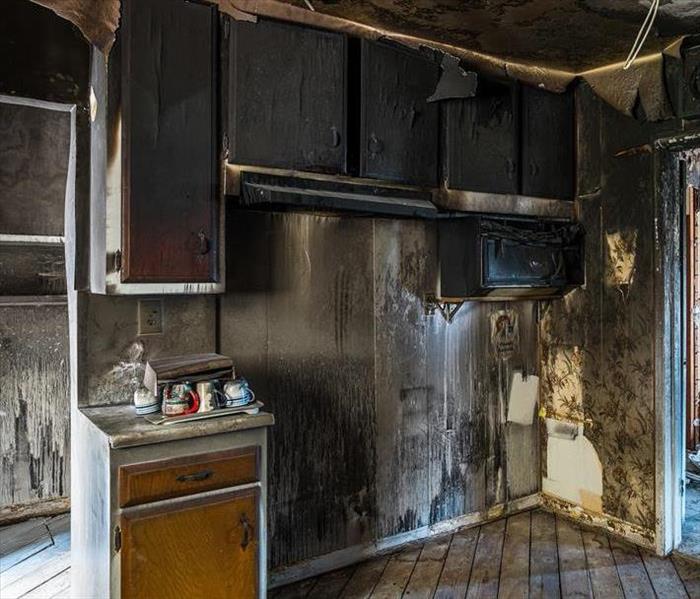 Kitchen fires can be devastating. You can prepare and prevent cooking fires by following some simple safety tips.
Kitchen fires can be devastating. You can prepare and prevent cooking fires by following some simple safety tips.
Cooking Fire Preparedness
Cooking fires are the number one cause of home fires and home fire injuries. Home fires are more likely to start in the kitchen than any other room in your house. Here are some facts and tips from mass.gov to help prevent kitchen fires.
Cooking fires are the #1 cause of home fires and home fire injuries according to MFIRS statistics.
Cooking Safety Tips
- Put a lid on a grease fire to smother it, then turn off the heat. Baking soda will also work.
- Never move a burning pan. You can be badly burned or spread the fire.
- Never throw water or use a fire extinguisher on a grease fire. Water will only spread the fire and the force of the extinguisher can splash flaming grease out of the pan.
- Stand by your pan. Don’t leave food, grease or oils cooking on the stovetop unattended.
- Wear short or tight fitting sleeves when cooking. Loose fitting clothing can easily catch fire.
- If your clothing catches fire, STOP, DROP & ROLL to put out the flames. Put burns in cool running water. Call 9-1-1 for help.
- Keep pot handles turned inward to prevent accidental spills of hot contents. • Create a three-foot “child-free zone” around the stove. Keep children and pets away from the stove while cooking to prevent burns and scalds. Cooking Safety Tips (cont.)
- Keep combustible objects such as pot holders, towels, paper or plastic bags away from heating elements.
- For fires inside an oven or microwave, keep the door closed, turn off the appliance, and call the fire department.
- Don’t place any metal inside a microwave. Utensils, aluminum foil or twist-tie wraps can arc and cause a fire.
- Microwaved foods and liquids can become very hot. Use caution to avoid scalds.
- Unplug appliances, such as toasters and coffee makers, when not in use.
- Don’t use the oven to store items.
Following these tips will help you to prevent kitchen fires. However, should your home experience an unexpected disaster, contact us at SERVPRO of Haverhill/Newburyport at 978-374-8555. We’re here to help restore your property, like it never even happened.
When Every Second Counts…
3/7/2018 (Permalink)
The National Fire Protection Association's theme for 2017 was "Every Second Counts" and when you think about that statement, it couldn't be more true. Most people think of escape plans and prevention when they think about fire safety but there is a much neglected and overlooked resource to consider.
The Forgotten Red-Head!
Prevention and a plan are obviously high priority, but when is the last time you thought about that fire hydrant up the street from your home or business? Keeping it clear of snow can save valuable time when time is of the essence.
If you have thought of it, but your thoughts go something like "It's not my responsibility to clear it of snow" you should reconsider.
Saving Valuable Seconds
Depending on the city or town you live in, keeping the hydrant clear of snow and debris could quite possibly be your responsibility. Check with your local fire department or town hall to find out the laws in your area.
Beyond that, keeping it clear only benefits you. If you are the victim of a fire, what do you want the firemen spending their time on? Clearing the hydrant or fighting the fire? Be smart. Be a good neighbor. Do what's Right.
After A Fire
If you are the unfortunate victim of a fire, we're here to help. After the fire trucks leave, your home likely suffers from fire and smoke damage and extensive water damage from firefighting efforts. SERVPRO of Haverhill/Newburyport have the specialized fire restoration training needed to restore your home to pre-fire condition.
Have Questions About Fire, Smoke, or Soot Damage? Call Today – (978) 374-8555
The Anatomy of Smoke & Fire Damage
3/7/2018 (Permalink)
Smoke and soot are invasive and can penetrate various cavities within your home, causing hidden damage and odor. Our smoke damage expertise and experience allows us to inspect and accurately assess the extent of the damage to develop a comprehensive plan of action.
Smoke and soot facts:
- Hot smoke migrates to cooler areas and upper levels of a structure.
- Smoke flows around plumbing systems, seeping through the holes used by pipes to go from floor to floor.
- The type of smoke may greatly affect the restoration process.
Different Types of Smoke
Closely Related But Very Different
There are two different types of smoke–wet and dry. As a result, there are different types of soot residue after a fire. Before restoration begins, we will test the soot to determine which type of smoke damage occurred. The cleaning procedures will then be based on the information identified during pretesting. Here is some additional information:
Wet Smoke – Plastic and Rubber
- Low heat, smoldering, pungent odor, sticky, smeary. Smoke webs are more difficult to clean.
Dry Smoke – Paper and Wood
- Fast burning, high temperatures, heat rises therefore smoke rises.
Protein Fire Residue – Produced by evaporation of material rather than from a fire
- Virtually invisible, discolors paints and varnishes, extreme pungent odor.
Getting Back to Normal
Our Fire Damage Restoration Services
SERVPRO of Haverhill/Newburyport specializes in fire and water damage restoration. We have the specific damage restoration training, personnel, and equipment and can quickly restore your home to pre-fire condition. Moreover, We live and work in this community too; we might even be neighbors. As a locally owned and operated business, SERVPRO of Haverhill/Newburyport is close by and ready to respond to your smoke or fire damage emergency.
Space Heaters Need Their Space.
2/7/2018 (Permalink)
During the winters months, many people have the mind set that keeping the overall home or office temperature lower while adding space heaters will save money. Whether that makes fiscal sense depends on several variables. The one thing that does not vary though, is that space heaters, when not used properly can be dangerous.
Space heaters should be kept at a minimum distance of three feet but often are used near beds or under desks, altogether too close to fabrics, papers or other flammable materials. Not considering this hazard can lead to unexpected fires that spread quickly.
Keeping these tips from DIY Network in mind can avoid potential tragedies:
No matter what type or brand of space heater you opt to use, follow these safety tips from the NFPA to reduce the chances of fires and injury:
- Keep anything that can burn, including bedding, furniture, and curtains at least 3 feet away from a space heater.
- Have a three-foot "kid-free zone" around space heaters and never use a space heater in a child's bedroom.
- Run power cords on top of carpet and step over them to avoid abrading the cord. Do not use extension cords.
- Turn off space heaters when going to bed or leaving a room.
- Don't use a space heater in a damp or wet area unless it's specifically made for that purpose.
- Turn space heaters off before leaving the room or going to bed.
- Never put a space heater on a countertop unless it's specifically designed for it.
- Install smoke and carbon monoxide alarms and test monthly.
- Only purchase "UL Listed" heaters which display the UL mark on their label. This is an independent organization which tests for safety.
- Don't use gas- or oil-burning space heaters indoors, only outdoors or in spaces open to the outdoors like tents or porches.
- Read and follow all manufacturer's directions for your space heater.
We are always here to help. Although we are in the clean-up business, we would rather see you avoid the crisis. In the event you do need fire-damage restoration, we will treat your home as if it's our own.
Mary Ellen Manning the Open House Table
1/31/2018 (Permalink)
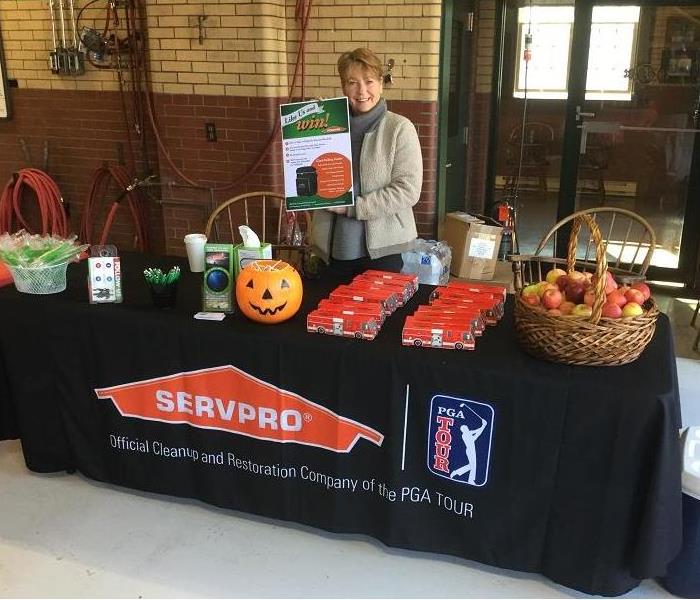 Mary Ellen Lawlor at the 2017 Amesbury Fire Dept Open House.
Mary Ellen Lawlor at the 2017 Amesbury Fire Dept Open House.
Every year during the Fall, most fire departments open their doors to the public, welcoming the community in to learn about fire safety, see the cool equipment they use, demonstrate best safety practices and even let the kids climb in and on the trucks. It's just a great family day, all around, to meet the men and women that dedicate their lives to keeping our communities safe.
Every year there is also a priority to discuss, such as "Every Second Counts," as was the case in 2017.
SERVPRO is always happy to support our local Fire Departments. At the 2017 Amesbury Open House, we donated apples, and our ever popular fire truck banks!
SERVPRO of Haverhill/Newburyport specializes in fire and water damage restoration. We have the specific damage restoration training, personnel, and equipment and can quickly restore your home to pre-fire condition.
Deep Fried Disaster!
11/3/2017 (Permalink)
Although a mighty delicious tradition, deep-frying a turkey on Thanksgiving can be risky.
Every year deep-fryer fires are responsible for five deaths, 60 injuries, the destruction of 900 homes, and more than $15-million in property damage, according to the National Fire Protection Association.
So you want to know which state has the most accidents?
For the last seven years, Texas has led the country in most grease- and cooking-related insurance claims on Thanksgiving Day, with 38 according to insurance company State Farm. Illinois follows, with 27 reports and Pennsylvania and Ohio are tied for third with 23. New York ranked fourth, with 22 claims and South Carolina and Georgia claimed fifth with 16 claims each.
Check out State Farm's safety video starring Si and Jase Robertson from "Duck Dynasty" fame. They give helpful and hilarious tips on how to avoid those nasty shooting flames.
https://youtu.be/ZNPNayJDxIo
Every Second Counts! Fire Prevention Month
9/21/2017 (Permalink)
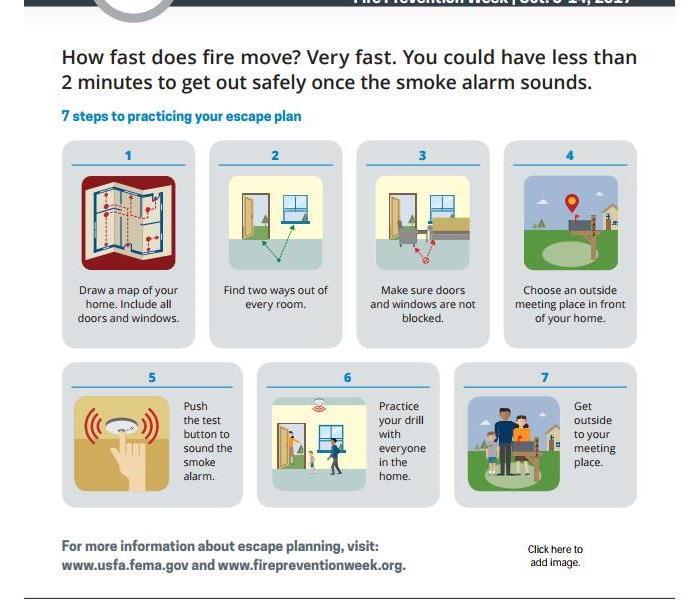 Downloadable graphic to review with family.
Downloadable graphic to review with family.
October is Fire Safety Month
While it is our job to clean up after the Fire Dept has contained the fire, SERVPRO of Haverhill/Newburyport and SERVPRO of participates in many of the local Fire Department Open Houses during this very important month.
The theme this year is "Every Second Counts" and it couldn't be more true. You can get a head start on fire prevention month by downloading this graphic. This downloadable graphic is a great learning tool to use with your family or in the workplace. They will be on hand for you to take with you and most fire houses.
Print it out and hang it in an area that gets a lot of traffic. A break room or your refrigerator, for instance. Having it in a visible place will keep it "top of mind" in the event it's needed.






 24/7 Emergency Service
24/7 Emergency Service



